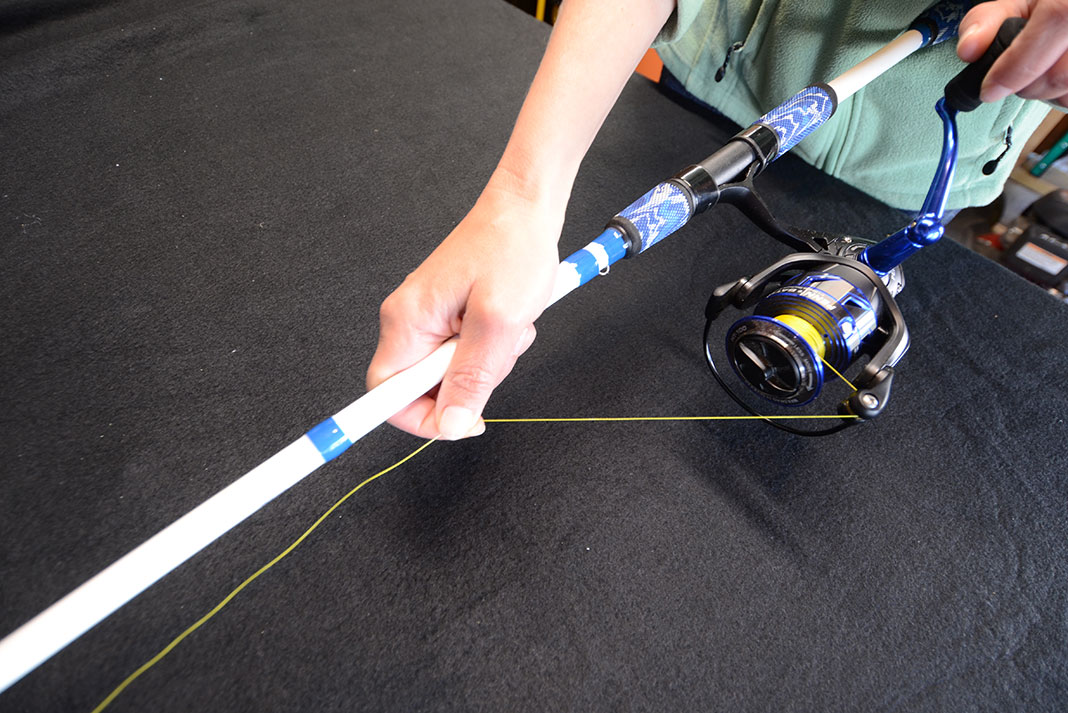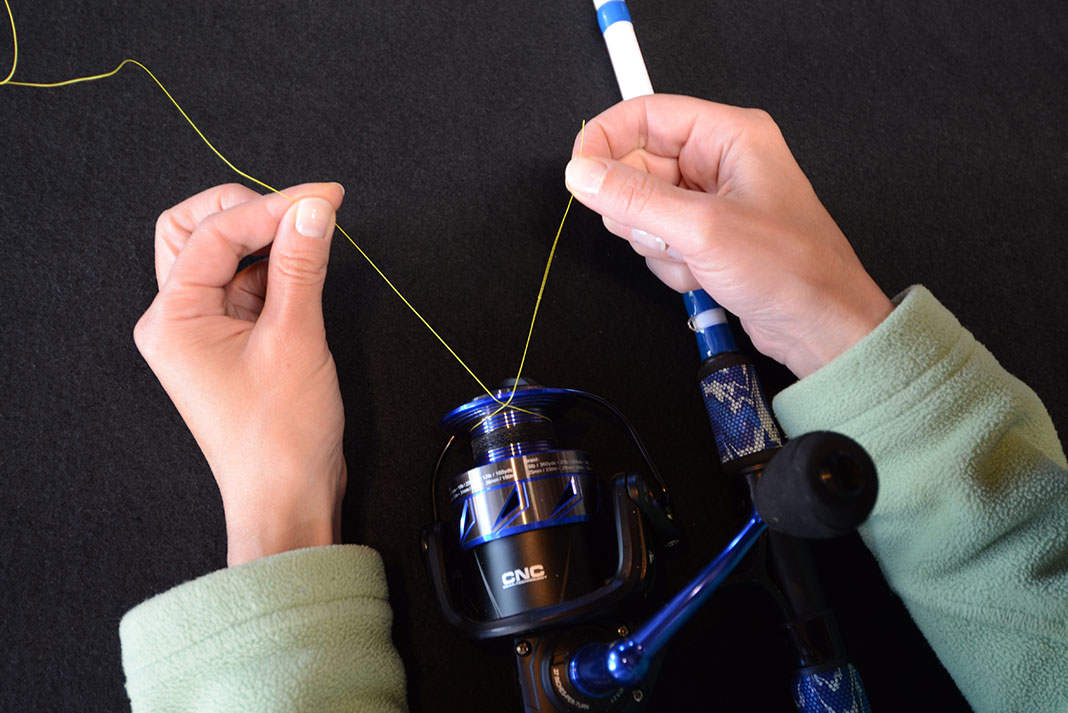Products You May Like
When the fish of a lifetime is on the line, success comes down to the best fishing line. The most expensive rod, reel and lure are worthless if the line breaks. The right fishing line can make the difference between getting a bite and bringing home a skunk, so learn how to spool a reel the right way with these expert tips.
How to Spool Your Reel with the Right Fishing Line
Regularly changing fishing line is the best way to avoid trouble. Monofilament line should be changed once a season, more often in salt water. Braided line can last a few years before it frays and fades. After each fishing trip, cut a couple feet from the end of the line and retie lures and rigs.
Spooling a reel correctly will avoid headaches on the next fishing trip. But, ensuring the line goes on without twisting or slipping takes careful steps. Here are answers to your questions about untangling the process of changing fishing line.

What line should I use?
Monofilament is made of a single strand of plastic polymer that stretches and coils into loops. Mono makes it easier to tie knots and pick out tangles. Monofilament is less expensive so it is easier on your wallet to replace. It is best for general fishing, trolling or any situation where tangles are possible.
Also made of a single strand of plastic polymer, fluorocarbon contains fluorine and carbon to be more abrasion resistant, buoyant and stiffer than monofilament. Fluorocarbon is virtually invisible underwater making it great for leaders. As a mainline, fluorocarbon is popular for finesse fishing in clear water.
Like the name says, braided line is made of micro strands of plastic polymer braided together. Braid is thinner and more sensitive than monofilament. For example, 20 pound monofilament is around .018 inches while 20 pound braid is .012 inches It is also stronger, avoiding abrasion and breakage. Many anglers prefer braided line because the thin line is easier to cast and highly sensitive to feel every bump and bite. The thin diameter also allows you to pack more or heavier line on a smaller reel.
What pound test line do I need?
Choose a fishing line within the recommended range on the rod and reel. The line rating applies to both monofilament or braided line. Lighter line will cast farther and sink faster. Heavier line is more abrasion and break resistant. The trick is to balance line diameter with the size of the fish and type of fishing. Go as light as possible without breaking the line when it counts.
How do I tie the line to the spool?
With monofilament, simply use an arbor knot to attach the line to the spool. Before tying braided line to a spinning or casting reel, wrap a piece of electrical tape one time around the spool to keep the slippery line from spinning under pressure.
How do I spool a spinning reel?
A spinning reel uses the bail to wrap line around a fixed spool. The advantage is backlash-free casting and friction-free drops. The disadvantage is line twist. As the bail winds the line, the line can twist leading to loops and knots. The problem is especially bad with monofilament. Avoiding a mess requires properly adding line to the spool.
Start with the filler spool of line lying on the work bench or the floor and the reel attached to the rod. Open the bail on the spinning reel. Thread the line from the spool through the rod eyes and tie to the reel spool with an arbor knot.
The key to success is allowing the line to leave the filler spool in the same direction it goes on the reel. Turn the reel handle and note which direction the bail spins when looking at the reel from the back. If the bail turns counterclockwise, be sure the line leaves the filler spool in the same direction to prevent the line twisting. Reels and spools differ, so occasionally stop winding and and check for loops in the line indicating a twist.
To wind the line onto the reel, hold the rod with one hand just below the first eye and pinch the line between thumb and pointer finger. Using the other hand, slowly turn the reel handle to add line to the reel while applying pressure so it packs the reel tightly.
After 20 turns of the reel, drop the rod tip to put slack in the line. If the line twists into a loop, flip the filler spool over to change the direction the line leaves.

How do I fill a casting reel with line?
Baitcasting reels are a little easier to fill with line. Since the spool on a casting reel rotates and most casting reels have a line guide, there is less opportunity for the line to twist or tangle.
Start with the filler spool horizontal with the line coming off the top of the spool the same way it will go on the reel. A small filler spool requires a pencil as an axle for the spool to spin. Larger spool of line can be wedged in a box to keep the spool spinning freely. Thread the line through the rod eyes and tie to the reel spool with an arbor or reverse uni knot. Use your thumb and forefinger to pinch the line and fill the reel by turning the handle slowly. To prevent a backlash, it is important to pack the line tightly with wide overlapping wraps.
How much line goes on a reel?
Fill the reel until the line is about 1/8 inch from the top of the spool. Overfilling the line could result in backlashes and wind knots. Too little line on the reel will reduce casting distance. Underfilling may not leave enough line to stop the fish of a lifetime.
This article was first published in the Early Summer 2022 issue of Kayak Angler Magazine. Subscribe to Kayak Angler Magazine’s print and digital editions, or browse the archives.
Adding line to the reel begins with an arbor knot. | Feature photo: Ric Burnley
